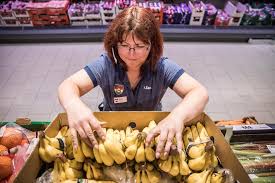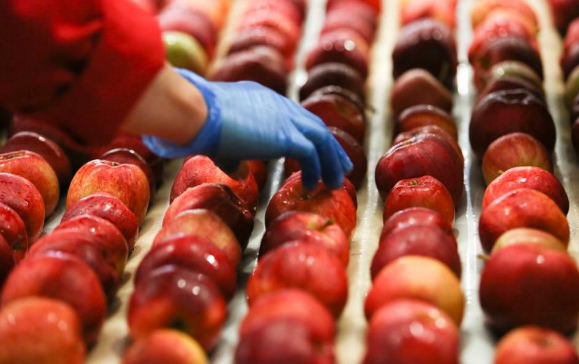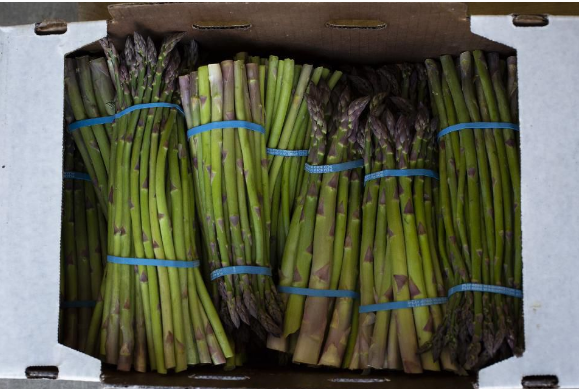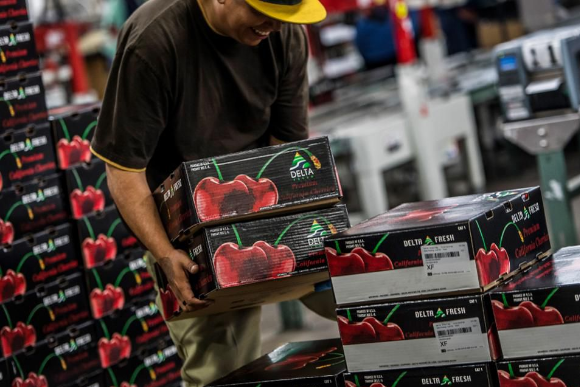
To the growing agritech industry, the food system is filled with problems best solved by the latest technology. That includes food waste, a problem agritech insiders argue is ripe for a blockchain solution, while critics say blockchain is no magic bullet. But it turns out food waste can already be tackled with existing tech solutions: Hungry Harvest began with nothing more than an Excel spreadsheet.
Hungry Harvest, the Baltimore-based company that rescues excess produce from farmers and wholesalers to sell to consumers, began its operations not by investing heavily in technology, but by scrutinizing the ins and outs of the food supply chain.
Evan Lutz, the company’s founder and CEO, says the company gets its excess produce from four different types of sources: farmers, produce packers, wholesalers and retail distribution centers. The “rescued” produce isn’t expired or defective, but it would otherwise be tossed because there’s too much of it or it’s considered too “ugly,” off-color or misshapen for most supermarket retailers.
“There’s 20 billion pounds of produce that kind of gets wasted across all four of those pillars,” explains Lutz, though the exact amount of food wasted throughout the system is the subject of some debate. “We started this company based on the premise that we can capture it and sell it to consumers at a discount.”

“I always knew technology was going to be helpful in [becoming] more efficient, but that wasn’t the first place where we invested,” admits Lutz. The first step, actually, was figuring out the logistics, making sure the company had the right data to plug into that initial spreadsheet.
The starting point was a closer look at supply and demand — from the excess in the supply chain to the preferences of the customers willing to buy it. “What farmers are we buying from? What’s the pricing strategy? What’re the ideal box contents? And how are we delivering that to our customers?” By answering those questions, Lutz says the company was able to begin predicting both sides of the supply and demand equation and create a successful business.

Now Hungry Harvest is moving to a more sophisticated e-commerce platform called Magento, which Lutz says will allow them to “spit out exactly what we need to order [so] our suppliers can plan a lot better and reduce waste on their entire supply chain as well.”
Customers are an important driver in the food waste calculation, says Lutz. Their ability to make swaps in their produce boxes is used to inform how much and what kinds of produce to order.
Data measuring customer interest has also driven the company’s growth into new markets, as Hungry Harvest has expanded from its original Baltimore and Washington, D.C. delivery areas to a number of other regions including Philadelphia, South Florida, Detroit and parts of North Carolina. The company chose its new locations by measuring survey responses, social media interest and requests made through the Hungry Harvest website.
Most of Hungry Harvest’s produce comes from farms that are about 300 to 500 acres in size, says Lutz. Though efficiency is often raised as an argument in favor of industrial-scale farming, Hungry Harvest has made itself an efficiency solution for small farms too, by providing a market for the excess produce these farms can’t sell elsewhere.

Despite Hungry Harvest’s simple spreadsheet beginnings, Lutz says he welcomes new technologies like blockchain. “It’s not that far out, right? I think [blockchain’s] gonna really help reduce waste across the entire supply chain if we’re able to introduce that level of transparency.”
The challenge, says Lutz, or at least one challenge, is figuring out how to get an aging population of farmers on board. And age isn’t the only barrier. The company works with an Amish farmer, for example, who Lutz says calls in his orders from a phone booth. Staff at Hungry Harvest enter the harvest data — “guy has sweet potatoes that are like three pounds each” — and the driver in turn delivers the handwritten purchase orders.
Lutz says no matter how the data is entered, what’s crucial is capturing how much is available and with increasing frequency. “With farmers, it’s usually every day [that they’re entering data],” says Lutz. “Based on the weather…the harvest schedule…their demands.” But that doesn’t mean the world of surplus produce is inconsistent, he cautions, “they can predict, you know, months in advance if they’re going to have a surplus, exact amounts of that and the harvest dates.”
While getting farmers on board with technology might be a challenge, it turns out that produce packing companies were more than tech-ready for Hungry Harvest. Produce packers, explains Lutz, were already using sensors to automatically sort out what they can’t sell to retailers — carrots or apples, for example, that aren’t the right size or color. “They’re not bad or moldy or rotten,” he says. “The only thing wrong with them was their shape or the color.”
Before Hungry Harvest, Lutz says those packing companies were paying a truck to take that produce to the dump, but now all of those fruits and vegetables go to Hungry Harvest’s consumers, people eager to do their part to combat food waste and rescue ugly produce from a once inevitable landfill.


